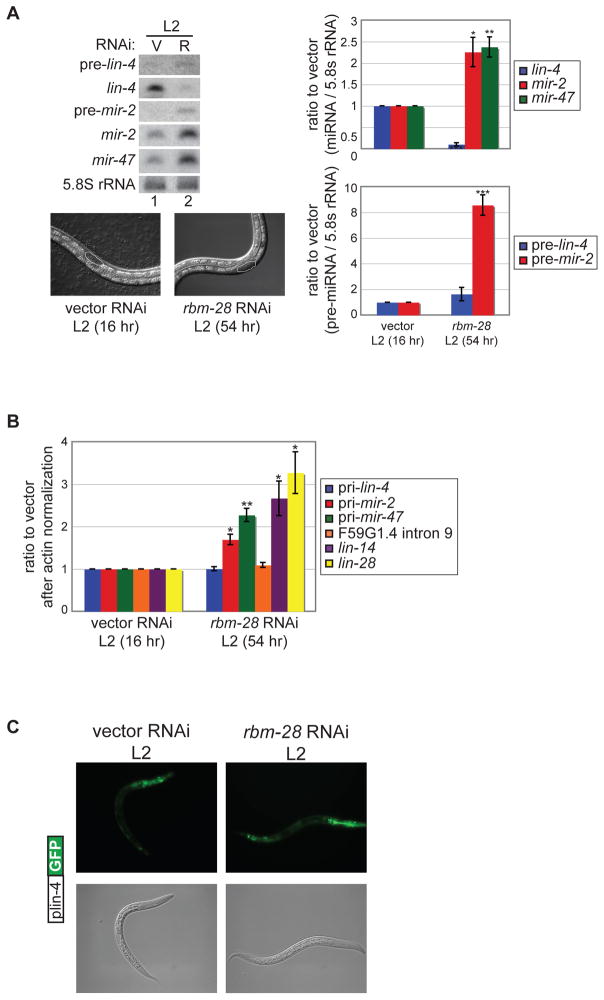Figure 4.
Characterization of the role of rbm-28 in miRNA biogenesis. (A) Synchronized rrf-3(pk1426) worms were cultured at 20°C on vector control (V) or rbm-28 (R) RNAi and collected at the L2 stage based on size and gonad development (16 hours for vector and 54 hours for rbm-28). Micrographs are shown of representative worms under the RNAi conditions with the L2 stage gonad shape circled. RNA from the vector and rbm-28 RNAi treated L2 worms was used in PAGE northern blot experiments to detect precursor and mature lin-4, mir-2 and mir-47 miRNAs, and control 5.8S rRNA. The average and s.e.m. of three independent experiments comparing vector to rbm-28 RNAi are shown and were analyzed by Student’s t-tests (*, p<0.05; **, p<0.005; ***, p<0.0005). (B) RNA from L2 stage worms grown on vector and rbm-28 RNAi was subjected to RT-PCR to detect the indicated primary miRNA, intronic F59G1.4 and protein-coding RNAs. The average and s.e.m. of three independent experiments comparing rbm-28 to vector RNAi are shown and were analyzed by Student’s t-tests (*, p<0.05; **, p<0.005). (C) Transgenic worms expressing the plin-4::GFP reporter were grown on vector or rbm-28 RNAi, and analyzed for GFP expression during the early L2 stage based on size and gonad development (16 hours for vector and 42 hours for rbm-28). Representative images are shown.

